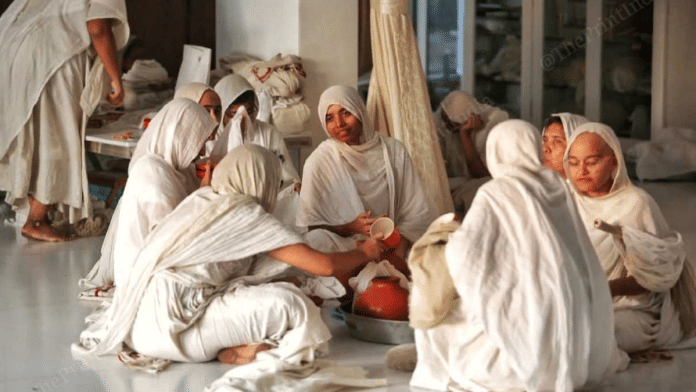Surat/Gujarat: As the sun set in the Surat sky, a teacher asked her student, “What do you mean by the bubble of sansaar?”
The profound question was put forward to nine-year-old Devanshi Sanghvi, who has been known as Sadhvi Digantpragnashreeji since she became a Jain nun. The young girl answered that the bubble is “something round like a football”. The conversation flowed between the two, switching seamlessly between Gujarati and English till the teacher conclusively answered the question: “Just like a bubble is sure to burst after a short time, the world is also temporary.”
In January, when Devanshi got initiated into the Jain monastic fold, her family, which owns a prominent diamond business in Surat, organised a big ceremony attended by thousands of people. Elaborate and grander than many Indian weddings, it was a five-day celebration that included a procession with an elephant pulling the carriage, with horses and performers escorting Devanshi and her family. People crowded on the roads and bridges to watch the spectacle. At another venue, under a giant white and purple tent, lit with crystal chandeliers, crowds gathered to witness felicitations, religious speeches, and rituals on an elaborately decorated stage. Devanshi, on some days, sat in the middle on a throne, dressed in a shimmery lehenga choli and the finest of jewellery — bangles and earrings to stone-studded neckpieces and even a diamond tiara.
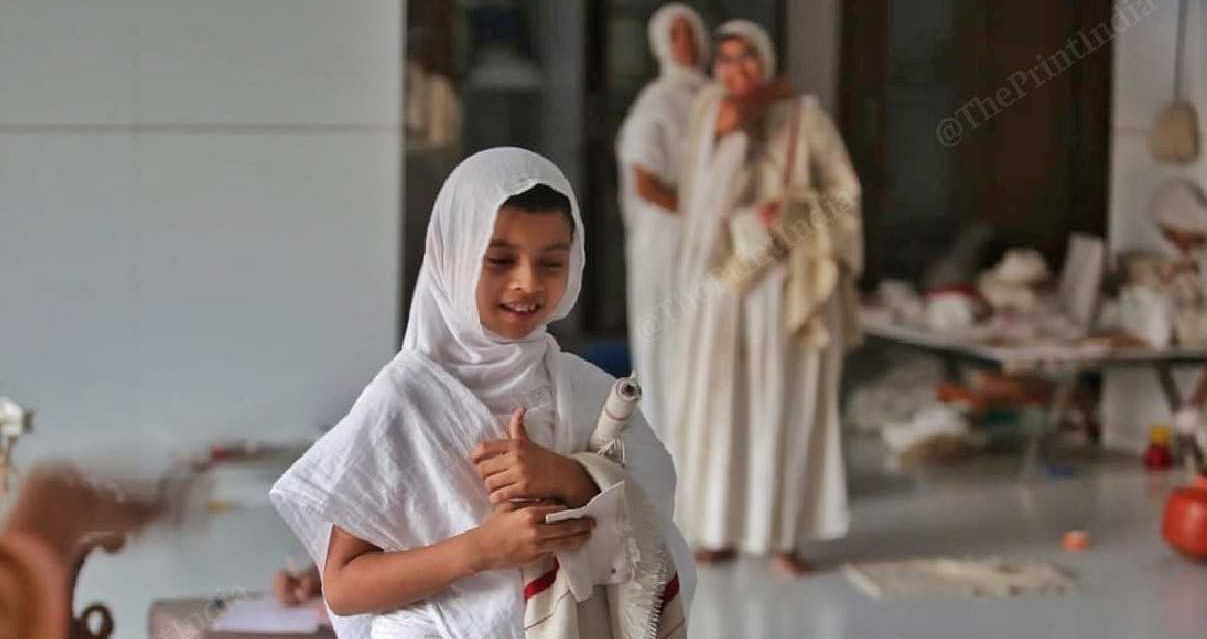
At the same ceremony, Devanshi shed her lehenga and jewels, cut her locks, peeled away all the glamour and donned a white cotton robe. Now a Jain sadhvi, she walked into the grand venue with a smile on her face.
The spectacle of riches followed by the embracing of austerity by a child has brought the focus back to the much-debated practice of bal diksha, which is the introduction of minors — sometimes as young as eight years old — in a monastic order. The children renounce the material world to become Jain monks or nuns, a difficult, gruelling life that involves eating one meal a day, never bathing, staying barefoot, and giving up all modern technology and facilities, including electricity.
For decades, child rights activists have opposed bal diksha on the grounds that minors lack the capability to decide whether or not to adopt a monastic lifestyle. Jain community leaders and parents whose children have taken the vows say that bal diksha is a ritual that is as old as the religion itself and is often voluntarily taken up by children. According to them, it is grabbing greater attention due to media coverage.
Bipin Doshi, a 73-year-old doctor and Jain scholar in Mumbai, clarifies that most of the sects within the Jain community don’t allow bal diksha. “You find one case [of bal diksha] and start making assumptions that [all] Jains allow it,” he says.
Acharya Rashmiratnasuri, the leader of the Jain sect Shwetambar Murtipujak that Devanshi belongs to, says that he has given diksha to 100 people under the age of 25 in the last two years, and nearly 70 of them were under 18.
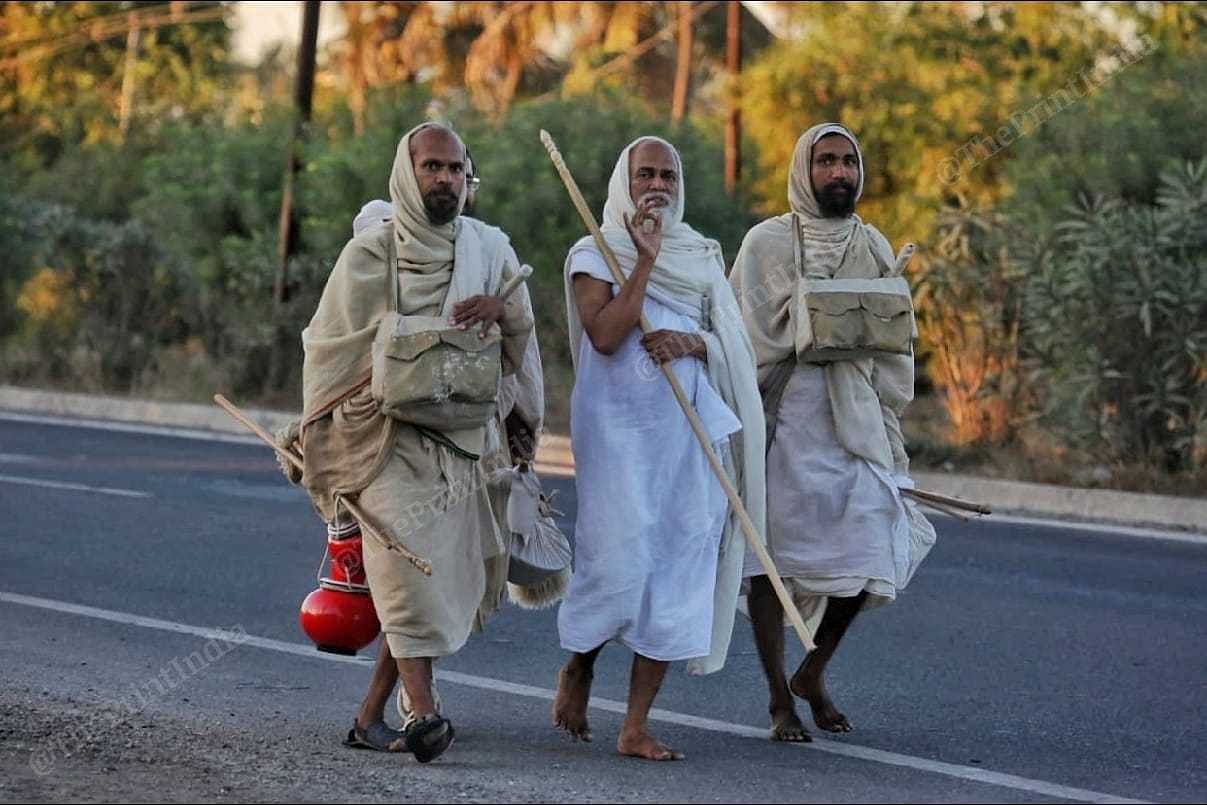
The spiritual goal prescribed by Jainism is to attain moksha (liberation or salvation) from the endless cycle of rebirth by following ahimsa (non-violence) not only toward human beings but all other life forms as well.
And at an age when most indulge in a life of comfort and develop aspirations of luxury, a child becoming a Jain monk or nun is an intriguing story. With a vast majority of the Jain community in India being affluent, relinquishing the material world usually means leaving behind secured family enterprises. And if one is a Jain in Surat, it often involves turning away from the sparkling diamond business.
“Initially, when she spoke (about bal diksha), we thought it was her childishness. But when she insisted on wanting it, and that too as early as possible, we realised she was serious,” Devanshi’s father Dhanesh says.
Also read: Kerala temple robot-elephant huge in God’s own country. Revolutionary Raman must win hearts
Diamonds to begging for alms
The Jain community in India, the smallest religious group compared to Hindus, Muslims, Christians, Sikhs, and Buddhists, was given the tag of a religious minority by the Narendra Modi government in 2014.
The Singhvis are a religious family, strictly abiding by Jain principles in their everyday life — from practising morning meditation called sāmāyika to not eating after sunset. They also diligently read the religious scriptures and believe that Jain studies and philosophy are as important as regular school education. That’s how Devanshi was introduced to Jainism at a tender age.
Her mother, Ami, recalls how she tried persuading her daughter to reconsider her decision. She fondly speaks about Devanshi winning a gold medal at her school’s Rubik’s Cube competition and being brilliant at math, so much so that her teacher proposed to train her for international tournaments. “She was the favourite student of her class teacher,” Dhanesh says.
Till last year, Devanshi was enrolled at an International Baccalaureate (IB) board school. She left her academic life as a class III student.
Seeing Devanshi at the upashray (a traditional place where Jain monks or nuns stay), Dhanesh and Ami gleam with happiness and pride. They watch their daughter getting lessons from Sadhvi Jinpragnyashri, a 52-year-old nun with an MBA degree who once ran her family’s fast-moving consumer goods business 21 years ago.
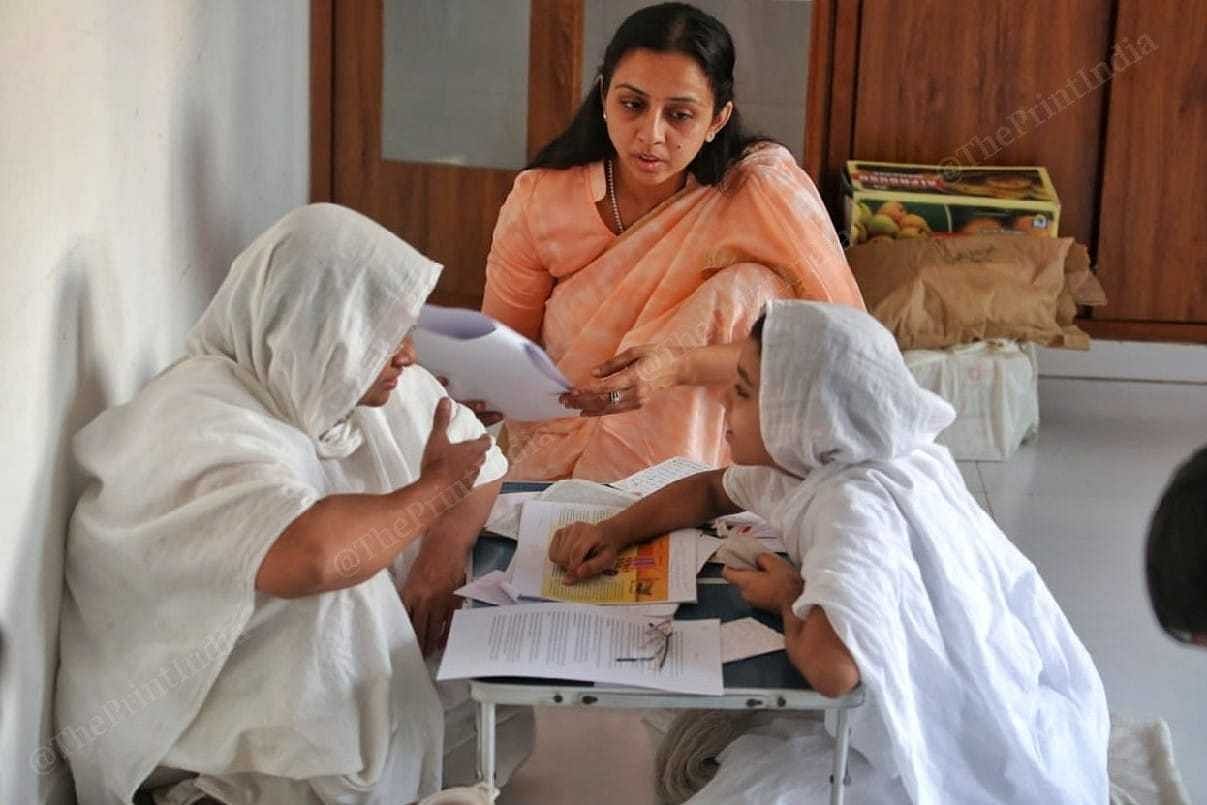
In between her lessons, Devanshi scrambles to take her meals and drink water as eating or drinking after sunset is discouraged under many monastic orders. She is the youngest nun among a group of 80.
Does she miss her parents or younger sister? A shy Devanshi shakes her head. She also says that now, her best friend is her guru. Her love for Rubik’s Cube is a thing of the past. Now she is allowed to keep a pair of cotton robes, a pot of water, a broom called rajoharan (to dust off insects while walking to avoid them being trampled on), an eating vessel, and religious texts.
Before donning the robes and plunging into the spartan way of life, Devanshi walked barefoot for nearly 700 km for vihar, a spiritual-religious journey, between January to June. Dhanesh recounts that their driver in the car followed the monks and nuns throughout the walk on the first day, in case Devanshi wanted to take a break. The father says she enjoyed the whole time.
“I don’t want to hurt my daughter; I want to see her happy. That was the motive, but she didn’t use the car even once,” he says.
Devanshi’s life has turned upside down — she was a diamond heiress who traded her life as a princess to become a nun. As the scion of a business that’s stated to be worth over $60 million (Rs 500 crore), Devanshi was born with a silver spoon and infinite possibilities and choices.
“You are saying she has left this and that, I’m saying she’s achieving something, so much so that she didn’t feel she was leaving something behind,” her mother asserts.
Also read: Jharkhand girls leave home for English, movies, city life. Then they face India’s urban…
Training and selection
Acharya Rashmiratnasuri, who became a monk 48 years ago, says that most of the young pupils he gave diksha to in the last two years belonged to wealthy families. He explains the correlation between the end goal of moksha and undergoing a life of abstinence.
The acharya gave the example of the hardship endured to reach the top of the Himalayas. “When you need to connect with God, you need to try hard. You need to undergo penance and do meditation,” he says.
Countless members within the Jain community say that the life of a muni (monks and nuns) is the best. Those training young Jain children after their diksha believe that starting at an early age gives everyone a headstart into attaining the ultimate goals of moksha.
“There are no exams (for the munis). Teaching is for transformation, a change in attitude toward life. We teach them to be forgiving, humble, straightforward, and flexible,” Sadhvi Jinpragnyashri says while describing Devanshi as a “premature child”, not physically but in terms of her social and spiritual maturity.
However, the road to becoming a muni isn’t only about willingness or desire. There is an exhaustive training period that everyone has to undergo before becoming eligible to get diksha. The daunting phase is when a Jain guru (teacher) tests if a person is cut out for the monastic life, which involves adhering to five vows — non-violence, truth, no stealing, celibacy, and non-possessiveness.
In Junagarh district’s Chorwad town, two brothers from Mumbai’s plush Marine Lines area have joined a group of sadhus who are undergoing vihar — an exercise linked to the fundamental principle of attachment. Constant movement doesn’t allow anyone to stay rooted in one place. They plan to accompany the sages for a year and then decide whether they want to commit themselves to the austere lifestyle. Simultaneously, the gurus will observe if they are meant to be monks.
The younger brother, Varsham, 16, finished his class X board exams last year with a score of 92 per cent. The elder one, Reek, 18, cleared his class XII with an 85 per cent score. He was pursuing commerce in college before he joined the vihar.
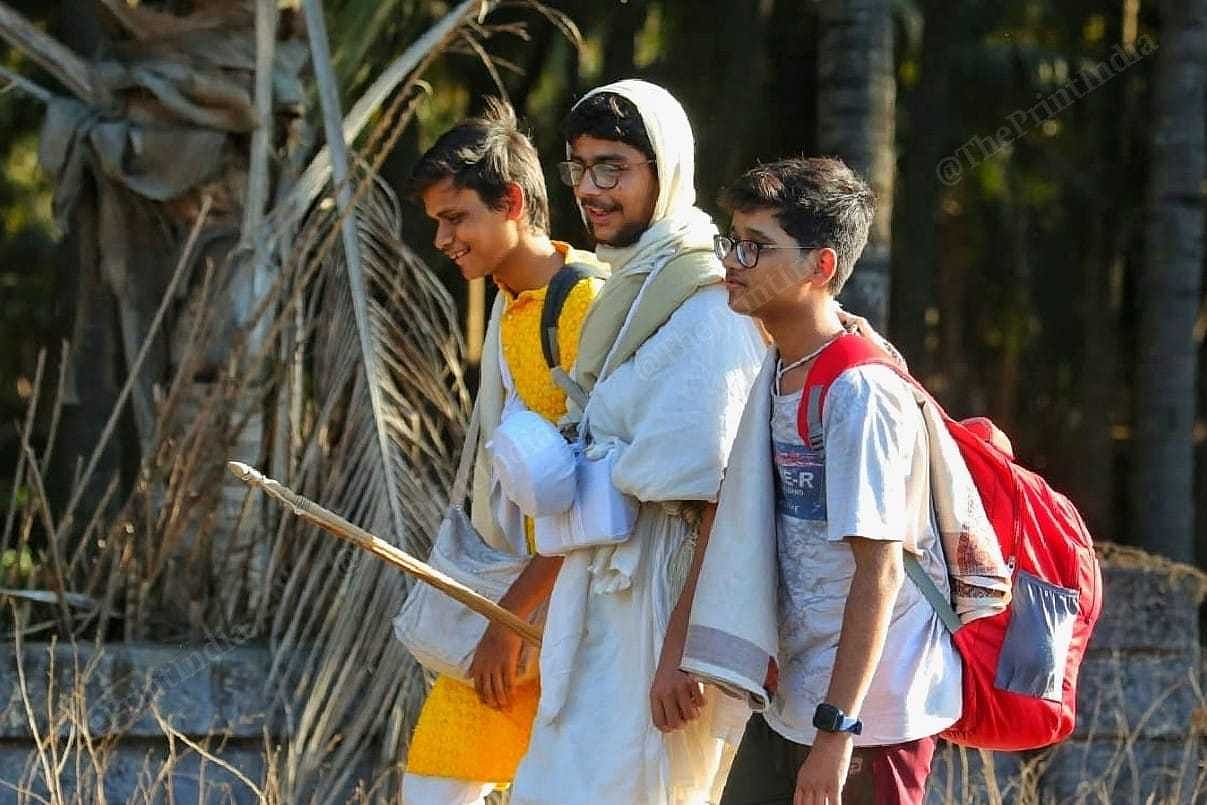
The brothers say it was their parents who wanted them to spend time with the monks. “The time I spend with the mahatmas (sadhus) here is so enjoyable, compared to the time with my parents that I don’t miss them,” Reek says.
He insists that the happiness they seek can only be attained by staying with the monks. “Race in life is for temporary happiness, this is for permanent happiness,” he claims.
What about those who don’t make it?
While the two brothers keep walking in the heat, hoping their day of monastic calling will dawn soon, there are many others for whom the day never came.
In Surat, 23-year-old Indra Shah and his family, who are in the diamond trading business, are busy with preparations for his wedding which, is due in March. Six years ago, he too walked with monks on a vihar and tested the waters of renunciation. He spent time with Jain monks during school vacations, attended Jain retreat sessions called upadhan and explored the monastic life for nearly two-and-a-half years. A total of 14 boys underwent the training, at the end of which three decided not to go down the austere path.
“I’d still say that the life of a saint is the best, even though I didn’t get it. Although I liked the life of my guru, I wasn’t feeling it from the inside that I’d qualify for diskha or if I could take it. I was scared, thinking how I could do it leaving behind all this (the world life),” Indra says, underlining that there was “nothing negative” about the ascetic lifestyle.
He explains that the route to taking diskha begins with parents first asking children whether they will be able to endure the monastic life. “When we answer in the affirmative, they consult the guru. If the guru agrees, only then diksha can happen,” he summarises.
Although Indra is excited about marrying the woman whom he has been dating for nearly two years, the residual desire to take diksha in the future lingers in his thoughts.
“That path (monastic life) is very simple. In this (materialistic) world, we need to wake up every day and work hard to earn money. There (in the monastic life) we only need to work for the soul. There is profit in that life because we instantly get moksha,” he stresses.
Indra might not have been able to embrace the life of a monk but his younger sister, Priyanshi, took diksha when she was 12. Soon, their youngest sibling, Bhavya, also chose the same path when she was the same age.
The Shahs’ drawing room has two large collages showing the siblings’ former selves and their current austere versions — only the smile is constant in all pictures. Jain families in which any member has adopted the monastic life are revered within the community. Acceptance into that life is considered a blessing. “The Jain community believes that the person (monk or nun) must have done something very good that they got to embrace sainthood. People respect the saint as well as the family,” said S.K. Jain, a retired Indian Police Service officer now associated with an NGO.
Although the families aren’t accorded any special treatment, they are looked upon “as a source of inspiration”.
Like the Singhvis, the Shahs are also strict practitioners of the faith — to the extent that they don’t have a television, fridge, or air conditioner installed in their house. Sadhvi Jinpragnyashri draws a parallel between the austere life, which includes not owning or using vehicles or having a permanent home, with the concept of minimal and sustainable living.
Indra’s parents, Dipesh and Pika, didn’t easily relent to the demands of their children to seek diksha. They tested their resolve for six months before being convinced that it wasn’t an “accidental” chapter. Priyanshi was learning Bharatanatyam before she decided to be rechristened Sadhvi Parathrekha nine years ago. The transformation of their youngest son Bhavya, who was once fond of cars and bikes, to a stoic teenager Sadhu Bhagyaratna still surprises them.
“Everyone has children, but I’m blessed that mine turned out to be sanyasis. [Although] the house feels empty and I feel sad that my kids are never going to return, I feel immensely happy knowing that they have gone as saints, as gods. Many parents wish the same for their own son or daughter, but not everyone is so fortunate,” the mother says.
The Shahs have kept the room where the kids grew up untampered — their bunk beds intact, the ceiling studded with luminescent stars and moons, doors with posters of Popeye and Mickey Mouse, and wardrobes full of clothes, toys, and board games.

It’s as if the life of a child was frozen in a neverland of what could have been.
“We miss them a lot, but I don’t feel guilty about them taking diksha. When people die, it’s only the memories that remain. Here, we are witnessing the growth of our children; they are learning the religious text, happy in their spiritual journey. We think they are facing hardships, but for them, it is enjoyment,” Dipesh says.
The soft-hearted father talks about how deeply he was attached to his daughter since she was the only girl in the family.
“I had tears in my eyes when I heard that my daughter sent blessings to me. They have grown up so much,” he adds, wiping his tears again.
Then vs now
The spirit of sacrifice is spoken of with a chest full of pride and moist eyes.
At an upashray in Junagarh, Priyanshi wakes up every day, participates in the services, and, accompanied by another sadhvi, she goes out for viksha — door-to-door begging for alms. She returns to the upashray with food that’s enough for 10 other nuns in the group.
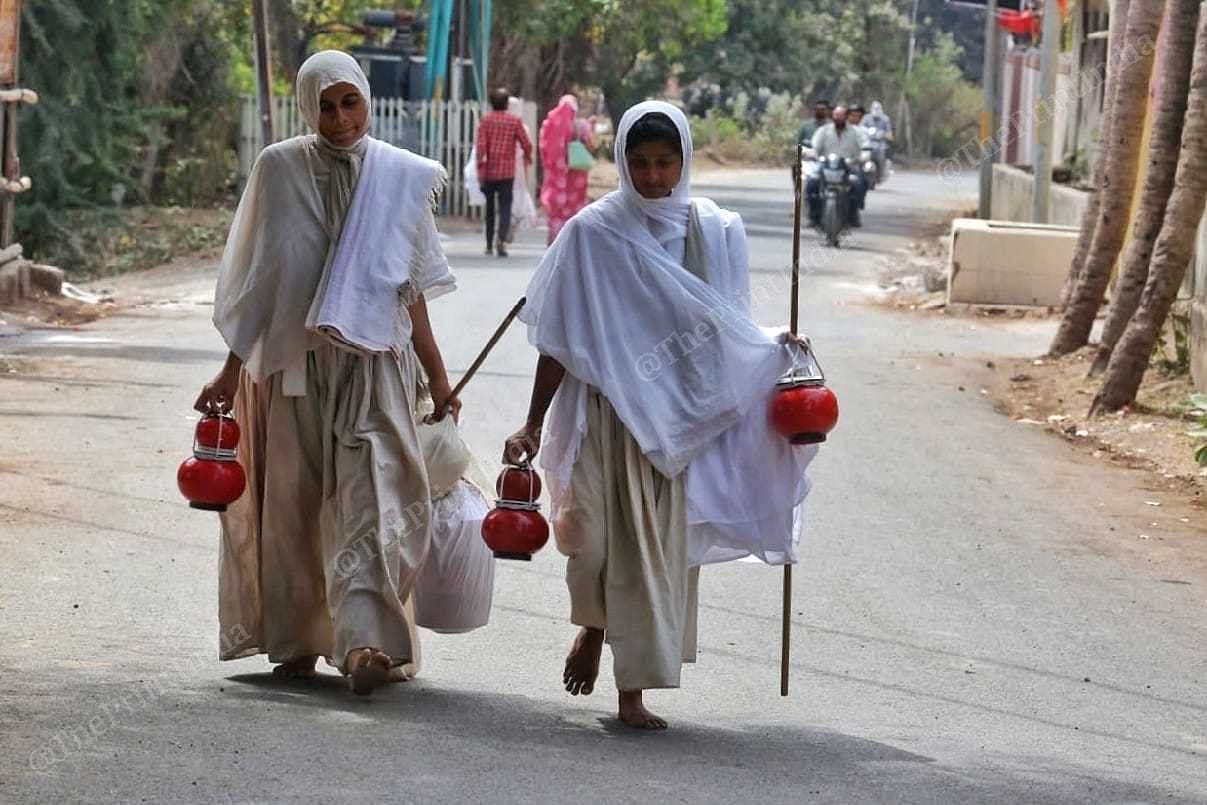
She met her younger brother 10 days ago after a year-long gap — both their vihars serendipitously crossed near Girnar on her birthday.
“I was very happy because I was meeting him after a very long time, and that day happened to be my birthday. He was very stoic. I was shocked that while I was so enthusiastic about meeting him, he wasn’t the least bit excited,” she says.
Instead of being sad, Priyankshi tried to understand her brother’s indifference. “He believed that now that we have taken diskha, the brother-sister bond isn’t there anymore. We are meeting as sadhu and sadhvi, so what’s the reason to be happy?” she explains.
Despite being a nun for nearly 10 years, she couldn’t help herself from prodding her younger brother. Do you remember it’s my birthday?
“He did know it was my birthday and said he even prayed for my well-being,” she adds. However, the past is not a place Priyanshi dwells on. She said they left knowing that they are “going to get a lot more” compared to what they have left behind.
“It’s only during this intermediate phase that we don’t have anything. Why should we recall the past?” she says.
Nearly 115 km away from the upashray is Bhavya, walking on a vihar with a group of monks. Bhavya says he was late in taking his vows — at 12 years.
“God has given us the freedom to choose this life at 8 years old, so I think I was four years too late. Here we enjoy so much and realise that the decision we have taken is the best,” the 18-year-old says. For them, happiness is spending time with their gurus, reading the religious scriptures, knowing more about God and meditating.
Leaving Instagram, K-pop life behind
Priyanshi’s temporary dwelling has other young nuns, including the 13-year-old Viranshi who was earlier a fan of the K-pop group BTS, her favourite member being V. Viranshi loved colouring her hair and making Instagram reels. Within a year’s time, she had made over 2,000 reels. Such indulgences became a thing of the past for her ever since her entire family entered the monastic fold a year ago.
Viranshi says she doesn’t miss the former life, but her mother and other sadhvis give instances where she has cried because she misses her father, a diamond merchant-turned-Jain monk.
The story of sadhvi Sagun Rekha, 21, whose family, too, is in the diamond trading business, is no less fascinating. Before she took her vows five years ago, she went on Europe trips with her family.
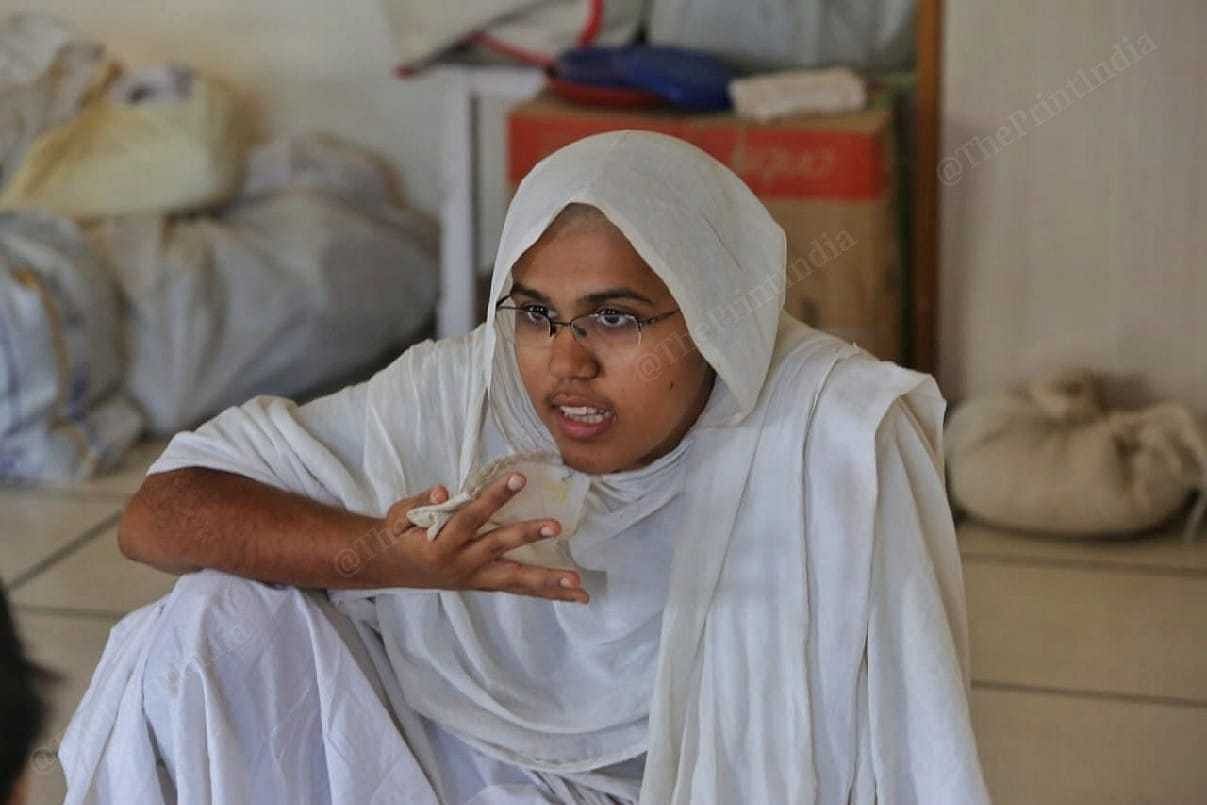
“My father has shown me the world. I’ve been to Paris, London, and Switzerland, but I wasn’t that happy compared to the happiness I get here. Our religion can make us gods, so I wanted a good place that could make that possible,” she says, underlining that her father took her on trips to ensure she won’t want to travel after becoming a nun.
The switch from a life of indulgence to bare necessity wasn’t easy. The upashray’s washrooms were dirty and the stench was unbearable.
“I was trying my best and passed the test,” she says, recalling “My reason to come here was my parents. They wished that I come here. They told me to try it.”
The uncomfortable question
Sadhvi Arhamrekha, 42, who is the guru of everyone in the tiny group underlines that “sanyas is not something that can be given or taken by force.” Speaking from her experience of 23 years, she says it’s an act born out of willingness — both to give diksha and receive it.
As children embrace the monastic life, an uncomfortable question lurks in the backdrop — what if the desire to leave arises? There was no single answer. The Shahs were spilt among themselves; Pika vehemently opposed the idea.
She says that if such a hypothetical scenario does arise, they will try their best to iron out the problem. “And despite all that, should that thought come to the children’s minds, parents and society are not going to accept them, so they will be careful before uttering something like this,” she says.
Meanwhile, Dipesh has a different view. He underscores that the family and society will accept them back if they don’t like that life, but is also certain that “not even a single one out of a thousand sadhus or sadhvis” will renounce the austere life.
“Once they enter that life, even if you torture them or try different tactics to get them to say they want to leave, they will never say it,” he says. And Indra is aligned with that sentiment — no one renounces the ascetic life, but he will “accept his siblings forever” if they want to come back.
Bipin Doshi at Mumbai University says that monastic life is “not like a prison from where you can’t come back”. Although he also stresses that people “hardly” leave monkhood, he notes that society is “more open-minded now” and if anyone cannot “absorb all kinds of tradition they are supposed to follow” at a certain stage of their life, they can come back.
One of the young Jain monks on the vihar in Chorwad says they were “in the world but away from it”. Much like his elusive concept of the world, the answer to the confounding question of why children are leaving the world of riches behind lies beyond the realm of everyday life.
“In this universe, there are only 5 per cent of things that we see and the rest is not seen by us. Spirituality is beyond our logic,” Doshi says.
Photos by Praveen Jain.
(Edited by Humra Laeeq)



